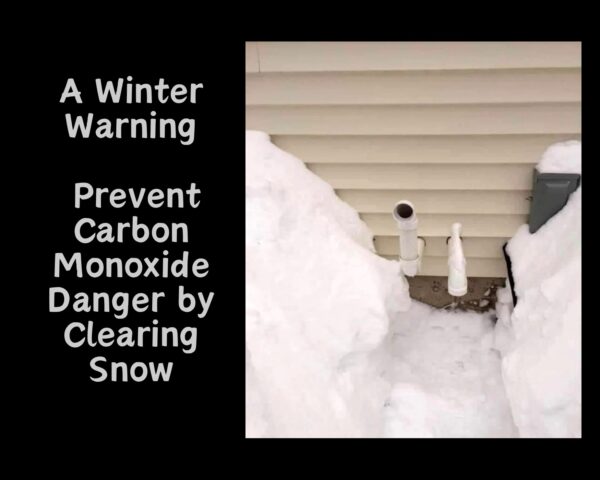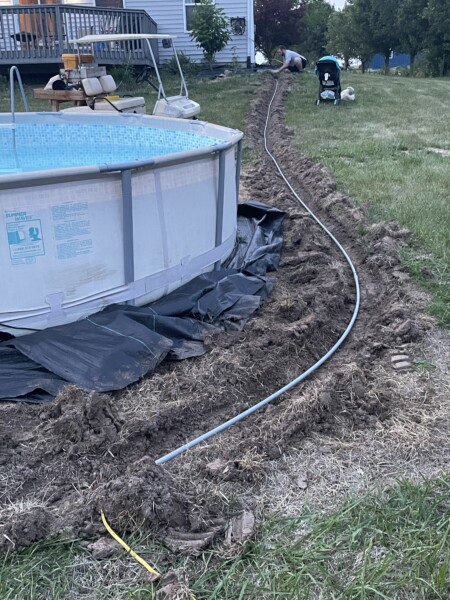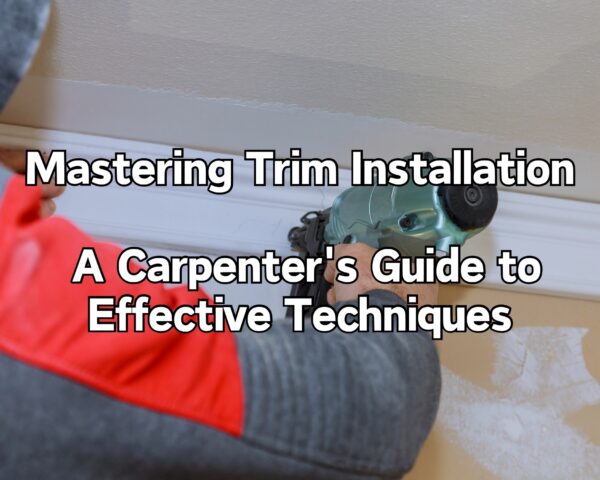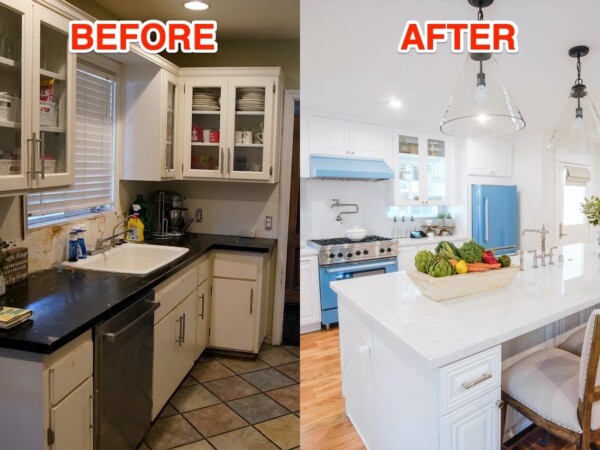
How To Improve Water Pressure For Your Entire Home (DIY Tips That Actually Work)
If you’ve ever turned on your shower hoping for a solid stream and got a sad little drizzle instead, you know exactly how frustrating low water pressure can be. I’ve been there — brushing my teeth with barely a trickle from the faucet, waiting forever to fill the bathtub, and watching my outdoor hose barely spray far enough to water a few plants.
At first, I assumed the worst: “Is something wrong with my plumbing? Do I need to re-pipe the whole house?”
But after a deep dive into my home’s water system — and a little DIY experimenting — I found out you can improve water pressure across your entire home without ripping up your walls or spending a fortune on a plumber.
In this article, I’ll walk you through the exact steps I used to boost my water pressure in the kitchen, bathroom, shower, and even outdoors. And if you want the full, step-by-step breakdown I followed, check out 👉 💧 my full guide to fixing low water pressure at home.
How I Knew My Water Pressure Was Too Low
I thought it was just my old showerhead — but when I started testing other areas, the story became clearer:
- The kitchen sink pressure was weak
- The washing machine took longer to fill
- My outdoor hose could barely spray the sidewalk
- And showers? Forget about it — it felt like rinsing off with a garden mist
That’s when I knew it wasn’t just a fixture issue — the whole system needed a boost.
What Causes Low Water Pressure in a Whole House?
To fix something, you’ve gotta understand what’s behind it. Here are the most common causes I discovered:
1. Partially Closed Main Shutoff Valve
If this valve isn’t fully open, it can limit pressure for the entire home.
2. Pressure-Reducing Valve (PRV) Set Too Low
This valve regulates the pressure coming in from the city water supply. Sometimes it’s dialed down too far.
3. Sediment or Mineral Build-Up in Pipes
Especially if you live in a hard water area, mineral deposits can narrow your pipes and reduce flow.
4. Clogged Aerators and Fixtures
Low pressure at sinks and showers is often due to gunked-up screens.
5. Old or Narrow Pipes
Some homes, especially older ones, still use galvanized steel pipes that corrode inside and choke flow.
How I Improved Water Pressure Across My Whole House
I tackled it one step at a time — and here’s what made the biggest difference.
✅ Step 1: Check and Open Your Main Shutoff Valve
I found mine near the front of the house. It looked open, but I gave it a firm twist counter-clockwise — and guess what? It moved about a quarter turn. Just that little bit gave my whole system a boost.
If your main valve isn’t wide open, your home’s pressure will suffer.
✅ Step 2: Adjust the Pressure-Reducing Valve (PRV)
This was a game-changer. My PRV was factory-set at around 40 PSI — which explains why showers were weak. I carefully turned the adjustment bolt clockwise a quarter turn, checked my gauge (more on that in a second), and brought it up to 60 PSI, which is right in the sweet spot.
Not sure how to adjust your PRV? I walk through that part clearly in my full guide 👉 🔧 Fixing water pressure from the PRV to your pipes.
✅ Step 3: Test Your Water Pressure with a Simple Gauge
You can buy a water pressure gauge from any hardware store for under $15. Screw it onto your outdoor faucet and turn the water on. Normal range is 45–80 PSI. Mine was reading 38 before I made the PRV adjustment.
✅ Step 4: Flush Out Your Water Heater
Hot water pressure was worse than cold in my house — and I eventually found the culprit: sediment in the water heater. I drained and flushed it out (it only took about 30 minutes), and the difference was immediate.
If you haven’t flushed yours in over a year, it’s worth doing. It not only improves pressure but can also extend the life of your water heater.
✅ Step 5: Clean All Faucet Aerators and Showerheads
This was one of the easiest DIY wins. I unscrewed the aerators from every faucet in the house, rinsed them out (some had little rocks and calcium chunks), and soaked them in vinegar overnight. Same with the showerheads.
💥 Results: My kitchen sink blasted water the next morning.
✅ Step 6: Install a High-Pressure Showerhead
After I cleaned out my old one, it helped — but upgrading to a high-efficiency, pressure-boosting model took it to the next level. It gave me strong flow without increasing water usage.
Here’s the model I personally used (and still love) 👉 linked in the full article
✅ Step 7: Check Appliance Valves and Hoses
Turns out, one of my washing machine valves was half shut — likely from the last time a tech was out. I opened it fully and shaved nearly 4 minutes off a full cycle fill.
✅ Step 8: Consider a Whole House Water Filter (Optional)
If you’ve got very hard water or sediment issues, a whole-house filter can help keep mineral buildup from forming inside pipes and fixtures. This is especially useful if your home pressure dips slowly over time — even after you’ve cleaned everything.
Other Tips That Helped Me Maintain Strong Pressure
- Slope soil away from outdoor hose spigots to prevent sediment washing in
- Use ¾” hoses outdoors instead of ½” for better flow
- Insulate older pipes to maintain pressure and temperature
- Turn off and drain outdoor spigots in winter to prevent frozen line issues
When to Call a Pro or Replace Pipes
Most pressure issues can be solved with DIY tricks. But here’s when you might need to call in help:
- Your PSI is under 30 even after all adjustments
- Your home is 40+ years old with galvanized steel plumbing
- You see rusty or brown water from multiple fixtures
- You’ve tried everything and nothing’s improving
In that case, you might be looking at partial pipe replacement — but even then, some plumbers offer pipe descaling or pipe lining as cheaper alternatives.
How Long Did It Take Me To Fix Everything?
All said and done — a weekend. A few hours Saturday flushing the heater, cleaning aerators, and adjusting valves. Sunday I installed the new showerhead, did another pressure test, and re-checked the PRV.
And by Monday? The difference was obvious.
Final Results (And What You Can Expect)
After all these fixes, here’s what improved:
- Showers feel 2x stronger
- Kitchen sink now blasts water
- Outdoor hose reaches all the way across the driveway
- Washing machine and dishwasher run faster
- Filling the bathtub takes half the time
And the best part? I didn’t need to rip up walls or replace a single pipe.
Still Struggling With Low Pressure? Start Here.
It’s tempting to assume your plumbing system is the problem, but in most cases, it’s a pressure setting, blockage, or sediment issue that can be fixed with a few tools and some DIY hustle.
If you want the full guide I used — with every step broken down and explained in plain English — check it out here 👉 🛠️ How to fix low water pressure in your house — fast
As an Amazon Associate we earn from qualifying purchases through some links in our articles.



